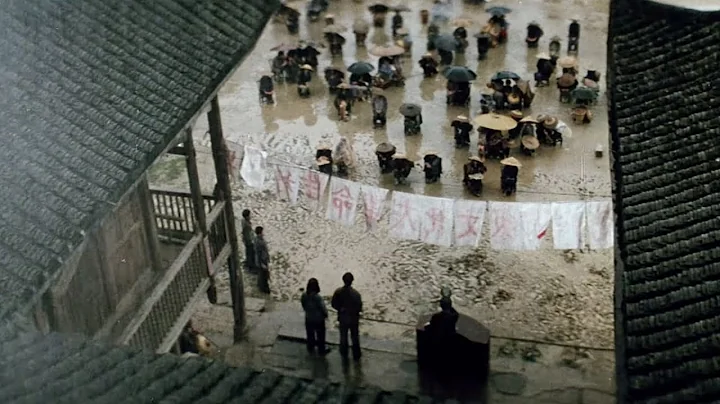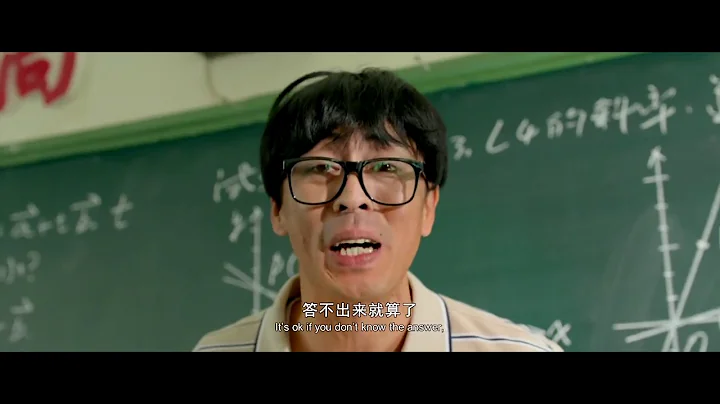Gaizhou Ancient City in "The Red Dust"
Author Zhou Shuang

In the 1990s, a movie "The Red Dust" was directed by Yan Hao and adapted from San Mao's works, Lin Qingxia , Qin Han, Maggie Cheung and Wu Yaohan starred in the movie "The Red Dust" ", received rave reviews upon its release and won the 27th Taiwan Golden Horse Film Awards for Best Actress, Best Plot, Best Cinematography, Best Director, Best Supporting Actress, Best Art Design, Best Style Design, Eight awards including Best Film Score.

What is little known is that this film with countless "fans" was filmed in the ancient city of Gaizhou, and its colorful storyline left a long lasting image of the ancient city of Gaizhou. The ancient city of Gaizhou, with its long history and rich style, also greatly adds to the beauty of this classic film.

"Red Dust" is an earlier film jointly produced by filmmakers from both sides of the Taiwan Strait and three places. The directors and actors are mainly from Hong Kong and Taiwan, and it was jointly produced by Hong Kong Tomson Film Company, China Film Co-Production Company and Changchun Film Studio . The film is based on the emotional entanglement between the female writer Zhang Ailing and the official Hu Lancheng of the Wang Puppet regime during the Republic of China, and the sisterly relationship between Zhang Ailing and Yanying. It describes Shen Shaohua (Brigitte Lin), who has been imprisoned by her father for a long time, and expresses her heart through articles. Depression became a writer and fell in love with the traitor Zhang Nengcai (played by Qin Han). Shen Shaohua's close friend Yue Feng (played by Maggie Cheung) has a good relationship with the two. Witnessing the crimes committed by Japanese imperialists in invading China, Yue Feng suddenly felt that Zhang Nengcai was disgusting. After Japan's defeat, several people encountered different life encounters and emotional entanglements, which became a portrayal of the life of that generation of Chinese people.
The Gaizhou Bell and Drum Tower is located above the south gate of Gaizhou Ancient City. It is a witness to the prosperity of the old Gaizhou City and one of the famous monuments in Yingkou area. The south gate of the ancient city was built in the Ming Dynasty. In the mid-Qing Dynasty, the city gate was renovated into the Guanyin Pavilion. This architectural style is very rare in China and has high research value on ancient architecture. In the late Qing Dynasty, a monk's room was added on both sides of the east and west side halls. The bells of the ancient city have become an indelible memory for generations of people in Gaizhou. Ringing the giant bell not only tells the time, but also has a fire alarm function. Although the Bell and Drum Tower has been repaired many times over the years, it still maintains the Ming Dynasty style and is now a provincial cultural relic protection unit. The famous calligrapher Mr. Shen Yanyi inscribed the Bell and Drum Tower as "The mountain surrounds Pingguo, and the sea embraces the clouds", which was engraved on the front eaves column.
A small courtyard near the Bell and Drum Tower plays a major role in the film. In this way, the authentic ancient courtyard has become a reflection of the times, and its rich sense of historical vicissitudes has left a deep impression on moviegoers. On the south side of the Bell and Drum Tower, there is a 450-meter-long north-south street called Ming and Qing Street, with mostly buildings from the Ming and Qing Dynasties on both sides. This ancient street has also become an important filming location in the film.
Ming and Qing Street was an important traffic thoroughfare and commercial street entering Gaizhou City during the Ming and Qing Dynasties. There are more than 30 old buildings, including shops, grain houses, salt houses, tea houses, cloth and silk shops, leather shops, and medicine shops. , tobacco and liquor stores, butcher shops, grocery stores, etc. Most of the street buildings in the Ming and Qing Dynasties were large wooden frame masonry structures. The basic structure of the building is: the walls are made of blue bricks with seams, the roof has a flat ridge, and the two ends are slightly curved and covered with owl kisses. The front and back of the roof are sloping and covered with green tiles, and the eaves are covered with tiles and dripping water. The interior of the house has three or two truss beams, round or square rafters, and truss columns and eaves columns are all equal structures. The doors and windows on the house face are clearly defined, and most of the doors have two straight openings or four opposite openings. Strips of stone or green bricks are applied under the window sills, and window lattice is applied above the sills. The doors and windows are all in the rhombus style with three crosses and six grades or double crosses and four grades. There are also straight grids or strips. The house layout of
is set up with a front store and a warehouse, and a front store and a house behind. Shops generally have seven or five rooms, and a few have three rooms. The structure has many bays, a wide depth, and front and rear doors or multiple doors. The two-story mezzanine is generally used for upper and lower stores or lower storehouses and upper warehouses, and lower storehouses and upper rooms. Fire prevention and anti-theft facilities are installed in the store.
The ancient streets and old-fashioned shops constitute a pleasant scenery in the film. The various cries are either loud or long. When Shen Shaohua (Brigitte Lin) strolls along the ancient streets, the moviegoers also It's like traveling through historical time and space.
The simple and vicissitudes of the bell and drum towers, the mottled stone slabs of the ancient streets, the ancient blue bricks and black tiles...these ancient city features soaked in the traces of time not only enrich the story content of the film, but also enhance the attraction of the plot of the film, making people watch it. While watching the movie, I also tasted the long historical charm. By watching the film, we also deeply felt the long history and profound cultural heritage of Gaizhou, a thousand-year-old city, as well as the long-lasting emotions brought about by it.
(Author's unit: Yingkou City History Office)
This article is selected from "Yingkou Spring and Autumn Period" Issue 2, 2017

If you are interested in Yingkou's history and culture or have relevant information, you are welcome to contribute to Yingkou City History The journal "Yingkou Spring and Autumn" edited by Zhiban tells the historical story of Yingkou with us!
Email: [email protected]





















